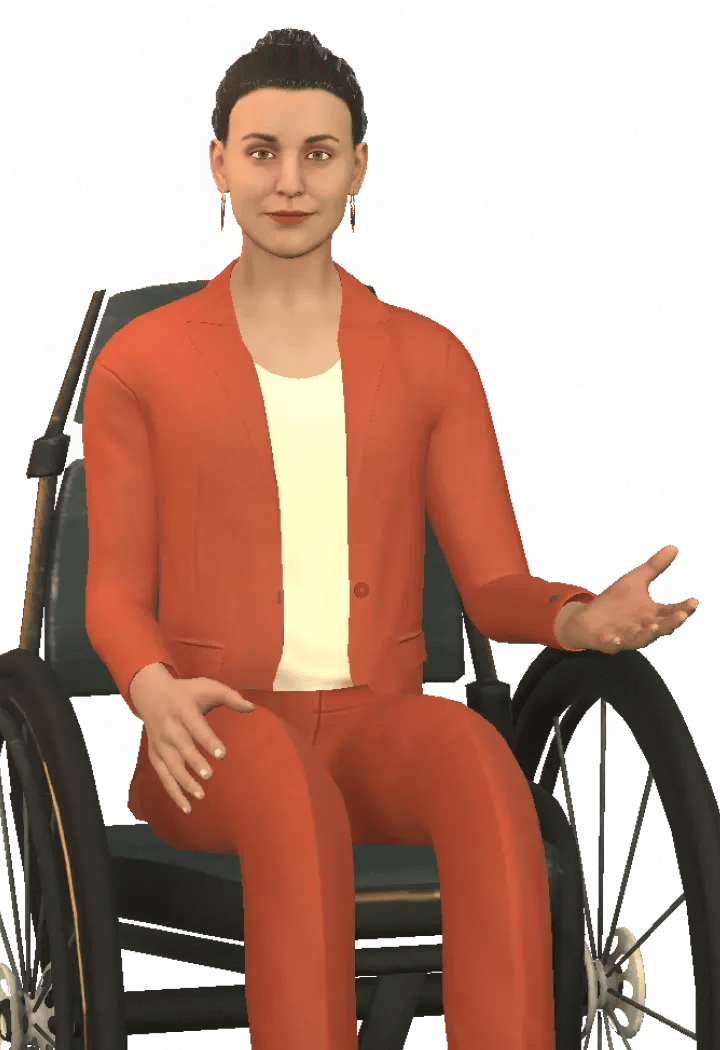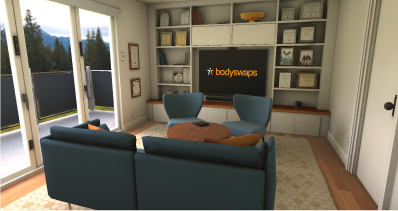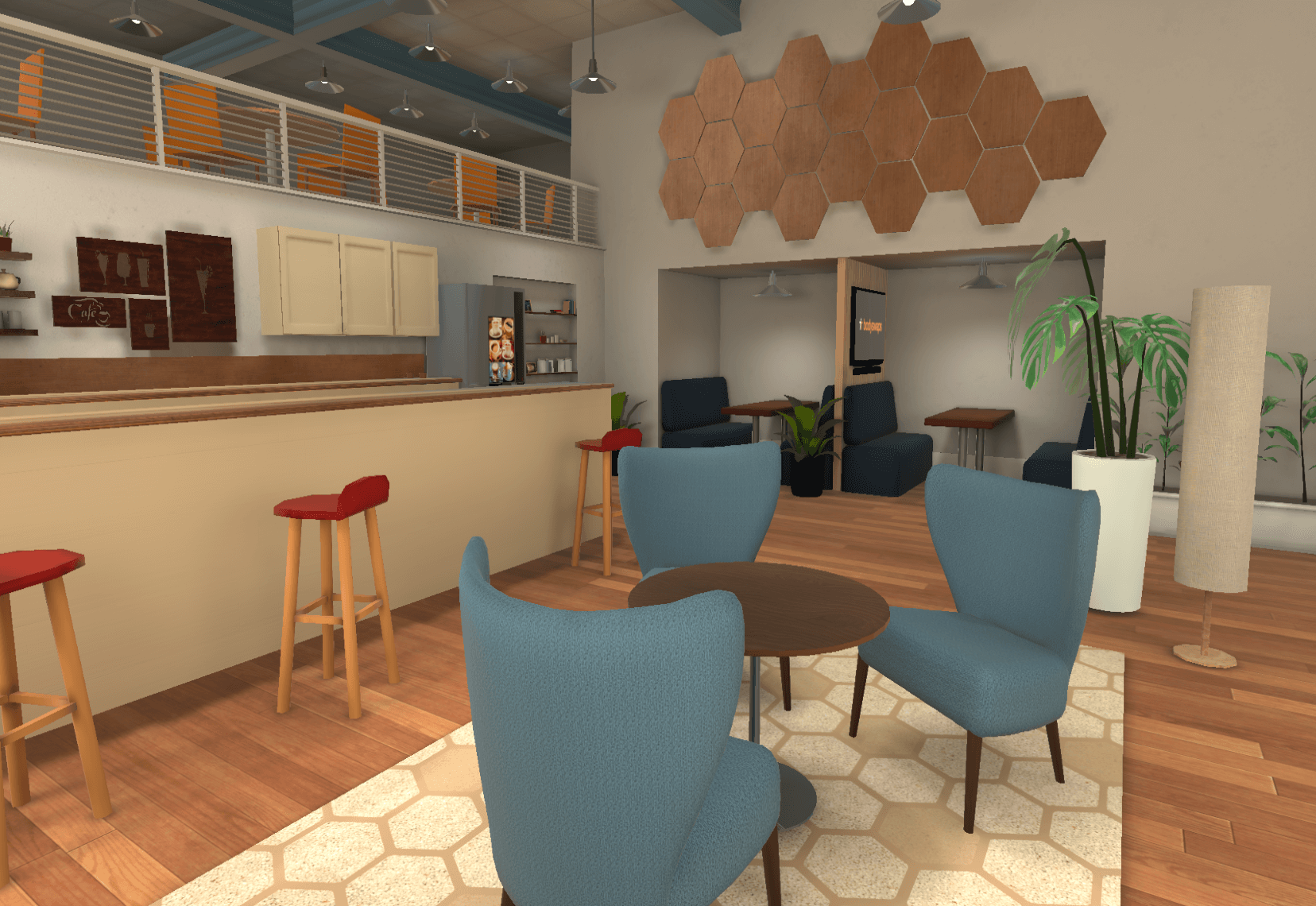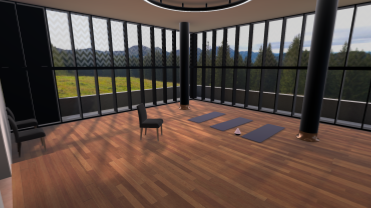Managing Interview Anxiety:
Job Interview Skills
Tutor Notes
Feeling nervous in job interviews is perfectly normal. But interview jitters prevent us from showcasing our true strengths and achievements, which can jeopardise our chances of success.
The good news is that there are many science-backed techniques for calming nerves and finding a more balanced mental state.
The Bodyswaps module on Managing Interview Anxiety explores some of these techniques, to help learners remain calm and collected and perform their best when going into an interview.
About this resource
Key learner outcome and goals
Learning Outcome
Don’t let nerves and anxiety hold you back
Learning Goals
- Identify how interviews make you feel
- Stand up for success
- Breathe and visualise
- Quieten your inner critic
A word about terminology
As a medium, Virtual Reality is not best suited to didactic teaching methods.
However, our intention is that all Bodyswaps modules follow a student-centred constructivist pedagogy. This means creating rich experiences in which learners can explore key concepts and ideas and reach their own conclusions.
This is why our documents speak in terms of learning goals and outcomes, rather than measurable ‘learning objectives’ (a la Bloom’s Taxonomy) per se.
Programme structure
We recommend accessing the ancillary and simulation items (shown here as navy blue squares) in the order indicated by the arrows on the.
The complete journey takes the learner through 3 interactive topics, led by virtual coaches Ashley and Abeeku, as well as ancillary activities such as onboarding, self-reflection, and the exit survey.
It is a linear experience, meaning the learner will be guided step by step through all the activities by the coaches.
We recommend that learners fully interact with each activity to get the full benefit.
It is estimated that each topic will take the learner approximately 5-10 minutes to complete, although completion times vary depending on whether the learner chooses to repeat topics to explore different options (encouraged) or to fine-tune their freeform responses.
Learner Journey
.svg)
.svg)
.svg)
.svg)
- Self-counselling
- Freeform interaction
.svg)
.svg)
.svg)
Characters
.webp?width=720&height=1050&name=abeeku%20(1).webp)

Ashley
Virtual coach.webp?width=720&height=1050&name=tula%20(2).webp)
Tula
Wellness coachLearning Environments

Tutor Room - Bodyswaps HQ

Breakout Room

Meditation space
Self-counselling activity
How do interviews make you feel?
Think about the interview you’re preparing for, an interview from your past, or imagine that you’ve been selected to interview for your dream job. Does it make you feel nervous?
In this module, we’ll be exploring the reasons why you may be experiencing anxiety - and how you can overcome it.
You’ll discover a self-counselling technique for overcoming your own personal concerns, so before you put your headset on, try to identify three or more reasons why interviews make you feel nervous.
Purpose
Location
Characters
Ashley and Abeeku (virtual coaches)
Duration
A generic onboarding sequence is provided as standard with virtual coaches Abeeku and Ashley.
The first time learners use Bodyswaps, this onboarding sequence familiarises them with the features of the app, takes them through an avatar selection and embodiment activity, and prepares them for the experience to come.
In the onboarding, learners will:
- Find out how this training is different from the rest
- Select their avatar
- Discover their virtual journal
- Learn how to navigate and use the tools and settings
Purpose
Location
Characters
Journal
Duration
The module begins with Ashley and Abeeku, the virtual coaches, discussing how interviews are often inherently stressful. But, with the right approach, you can control your anxieties and put your best foot forward.
They set out the learner’s goals for the module, and introduce the different self-calming strategies they’ll be exploring throughout the module.
Then, they invite the learner to complete a short likert-style self-reflection survey, to indicate how confident they feel about the following key learning points:
Identifying how they feel about interviews
Adjusting posture to look and feel more confident
Using mindful breathing to reduce stress and anxiety
Using affirmations to quieten self-criticism
These self-reflection questions will be repeated in the debrief at the end, to assess how the learner’s confidence levels have changed.
Note: If you wish to receive data about how the learner’s confidence levels have changed as a consequence of the training, it is important that they complete this introduction and the debrief at the end.
Purpose
Explore the learner’s current attitude to interviews
Location
Breakout room
Characters
Ashley and Abeeku
Journal
Duration
Research shows that recognising and naming emotions is an effective strategy for managing anxiety. The words we use to describe how we’re feeling are often connected with our confidence levels, so it’s helpful for us to reflect on them.
In this activity, learners explore the thoughts and feelings that they usually experience during interviews, and think about how this can impact on their performance. Ashley and Abeeku ask various questions, and the learner selects how they want to respond from three given options.
For example, when they receive an interview invitation, do they feel anxious, excited, or neutral? When they finish the interview, do they feel pessimistic, pragmatic, or optimistic?
Throughout the conversation, an on-screen gauge will shift depending on whether their chosen response represents being not confident enough, balanced, or too confident.
Then, the virtual coaches offer some words of wisdom about the learner’s current natural response. A little bit of nerves can actually help their performance, while too much can be overwhelming. Oppositely, too much confidence can lure them into a false sense of security and leave them unprepared. Finding a healthy balance of both will help them perform their best.
Purpose
Manage anxiety using power pose, visualisation and mindful breathing
Location
Meditation space
Characters
Tula (wellness coach)
Journal
Duration
When we feel anxiety or negative thoughts coming on, it’s useful for us to turn our attention to what we’re doing with our body. Adjusting our posture and breathing is an easy, effective way to combat nerves.
For this activity, the learner heads over to Tula’s meditation space to try out some practical, science-backed activities for physically dispelling their anxiety.
The first technique that Tula guides the learner through is power posing. This involves adjusting their posture to straighten their body and take up more space. Scientific research shows us that occupying this pose for just two minutes significantly reduces the stress hormone cortisol.
While adopting their power pose, the learner also practises controlled breathing, combined with grounding and visualisation techniques that help them to feel immersed in the mindful state.
After practising these meditative strategies, AI-enabled analytics help the learner reflect on how well they followed them. For example, whether they held the power pose for long enough to get the full benefits, and whether their gaze was drifting to other parts of the room due to lost focus.
Purpose
Combat unhelpful thoughts that undermine confidence and self-esteem
Location
Breakout room
Characters
Abeeku
Duration
Most of us have an ‘inner critic’ – the source of all those thoughts that undermine our confidence and self-esteem, and lead to anxiety and stress. Challenging our inner critic can be difficult, however.
A phenomenon called Solomon’s paradox shows that people give better advice to friends than they do to themselves. In this activity, learners discover a way to turn this paradox into a useful strategy. They learn about the power of speaking to yourself like you would a friend, to challenge the self-doubts and anxieties that often crop up before interviews.
First, they’ll put their worries into their own words, which helps to produce therapeutic effects in the brain. Then, they’ll talk about their skills, experiences, and achievements. This helps boost confidence, and equips them with good self-affirmations for the next step: speaking to themselves like a friend.
Once they’ve shared their thoughts, they’ll swap bodies with the avatar of their future self, and speak to themselves in their own voice about why they shouldn’t feel so nervous.
They’ll then bodyswap back into their avatar, and listen to the words of wisdom from their future self.
Reaffirming all their positive qualities and everything they’ve accomplished helps to reframe and uplift their mindset. In turn, they’ll feel more self-assured in the interview and better prepared to show their best self.
Purpose
Debrief the learner upon completion of the training and prompt self-reflection
Location
Tutor room
Characters
Abeeku and Ashley
Journal
Duration
Abeeku and Ashley congratulate the learner for completing their journey through this course, and provide some closing thoughts on how using the anxiety-dispelling strategies explored in the module can help them to perform their best in interviews.
Now, they’re invited to take the same likert-style survey from the beginning, to encourage the learner to reflect and self-report on their confidence levels following completion of the training.
The questions relate to how confident they now feel about the key learning points:
- Identifying how they feel about interviews
- Adjusting posture to look and feel more confident
- Using mindful breathing to reduce stress and anxiety
- Using affirmations to quieten self-criticism
Purpose
Assess the effectiveness of the training itself
Location
N/A
Characters
Journal
Duration
Before the learner leaves the module, they are asked to complete a short survey about their experience.
This survey is not compulsory, but the data helps us to assess the effectiveness of our product and identify any areas that need improvement. Clients also find it beneficial when assessing ROI.
They are asked to mark whether they agree or disagree with the following statements, on a 10 point scale:
- I would recommend this experience to others
- The experience helped me identify elements I could improve upon
- I now have a better understanding of how to manage interview anxiety.
Exercise 1 - Develop a meditation practice
Guided meditations like the one Ashley showed you in the simulation can help you to control anxiety, improve attention and focus, and generate a feeling of wellbeing. The more you practise, the bigger the benefits and the more effective you become.
Even a short 5 minute daily meditation will benefit you enormously.
Exercise 2 - Practise self-affirmation
Remember the words of advice you gave yourself when you switched bodies with your ‘future self’?
Scientific research shows that repeating affirmations to yourself when self-critical thoughts arise can help manage anxiety and depression, as well as boosting self-esteem. The practice has even been shown to improve academic achievement!
Psychotherapist Ronald Alexander of the Open Mind Training Institute, recommends writing your affirmations down in a journal and repeating them in front of a mirror three to five times a day, for maximum effect.
